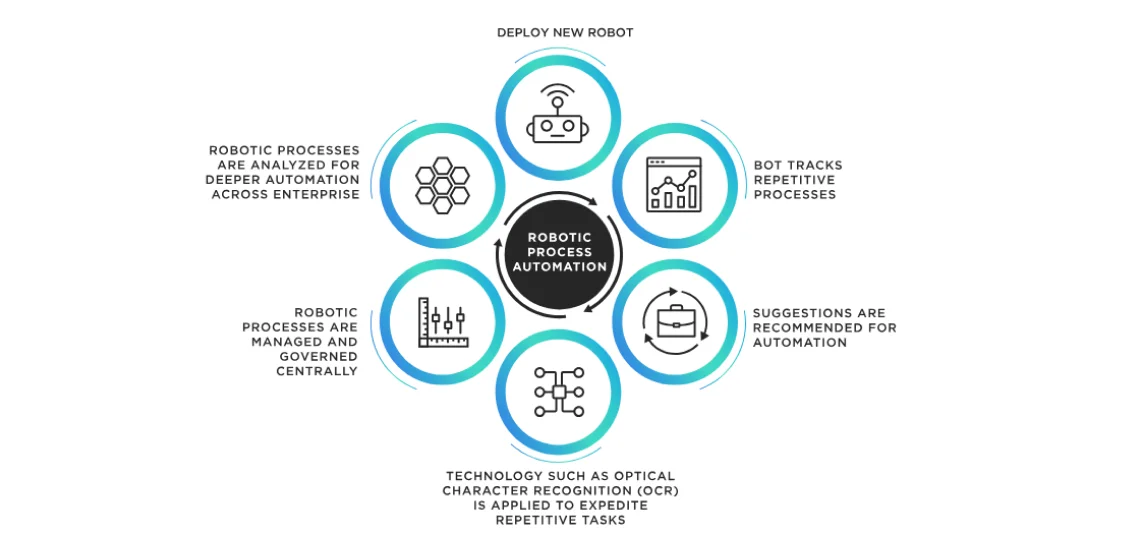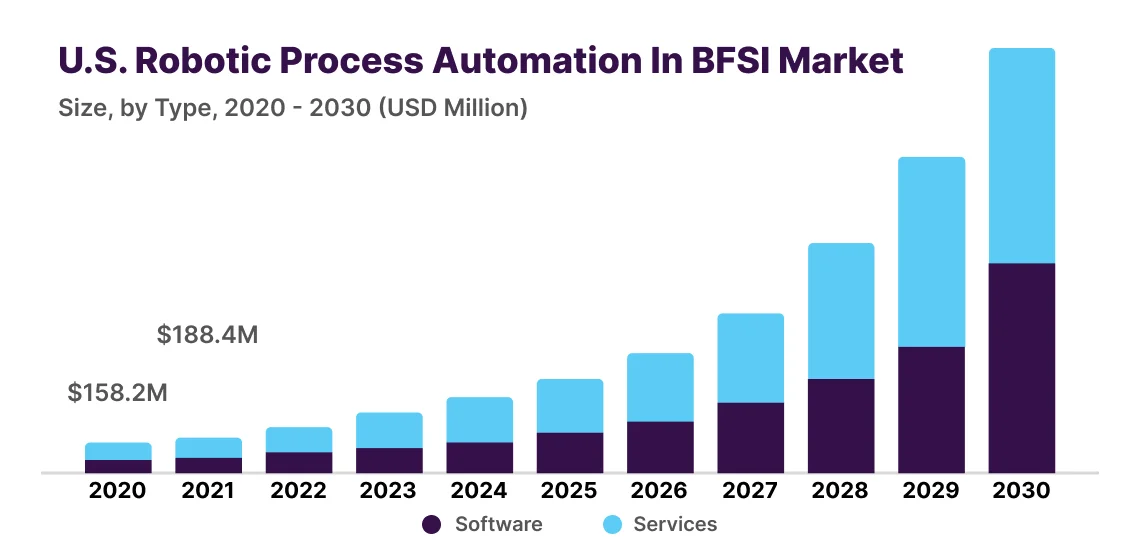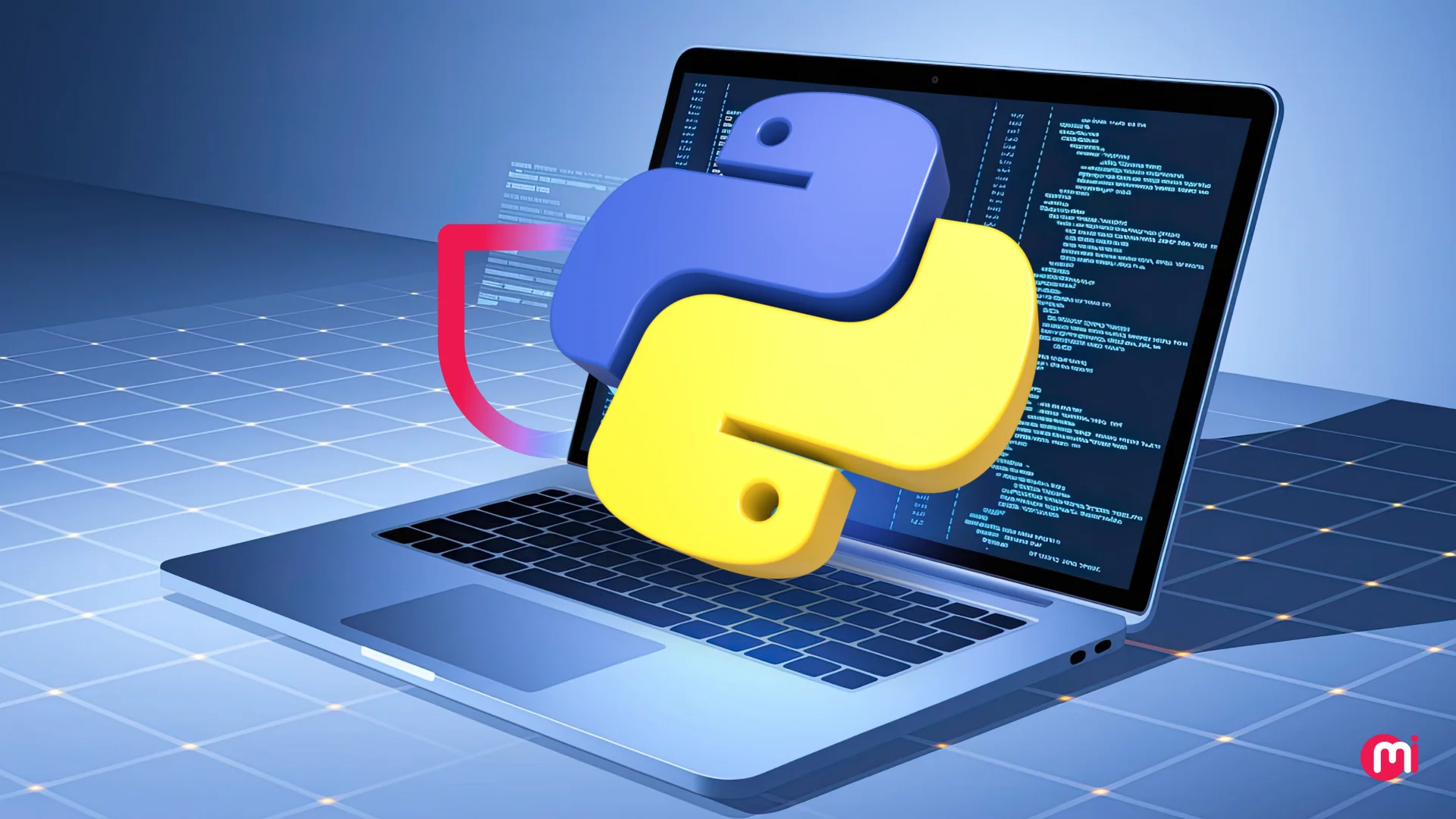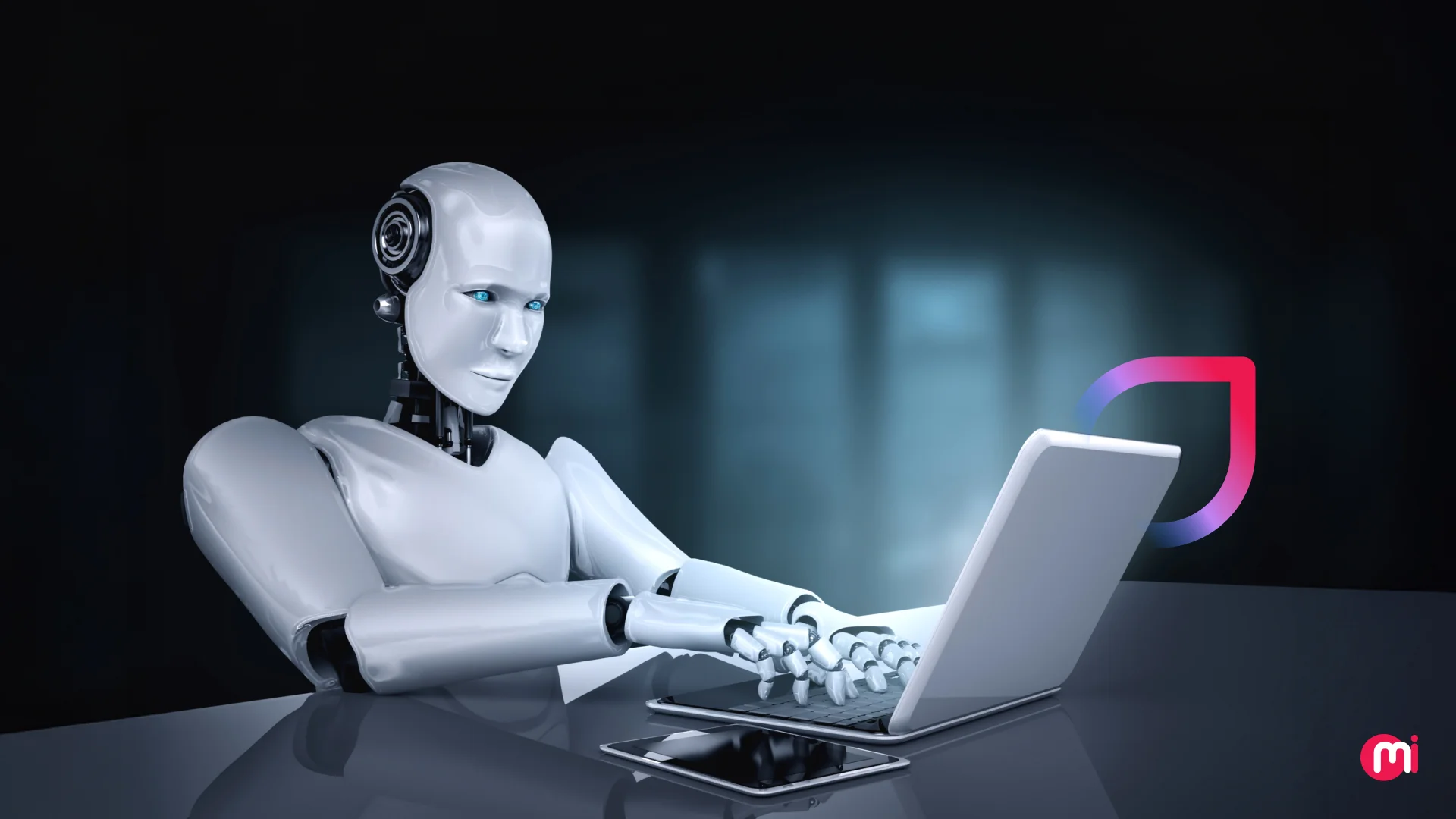7 RPA Trends of 2025 Changing The Way Businesses Work
- AI/ML
- March 15, 2024
Robotic Process Automation (RPA) has evolved from basic rule-based automation to a sophisticated tool integrating artificial intelligence (AI) and machine learning, making it a pivotal component of modern business operations. Looking ahead, several key trends are shaping the future of RPA. This blog explores the key RPA trends contributing to the growth of businesses and automation.
Have you ever envisioned a workplace where tasks are effortlessly completed and errors become a thing of the past? Intriguing, isn’t it? That’s Robotic Process Automation (RPA) for you, bringing vision to life and simplifying and automating business operations.
RPA is going to bring many transformations while leveraging emerging technologies along the way. In this blog, we have covered Robotic Process Automation trends that are poised to make our work life more engaging and easy.
What is a Robotic Process Automation (RPA)?
Robotic Process Automation (RPA) is a technology that utilizes software robots, or bots, to automate repetitive tasks within business processes. These tasks are often manual, time-consuming, involve interactions with digital systems and applications. RPA bots are programmed to mimic human actions, navigating through user interfaces, inputting data, and executing tasks following predefined rules.

RPA for enterprises can often be implemented without making significant changes to existing IT infrastructure. It can interact with various applications without requiring complex integrations. It improves operational efficiency by automating routine activities, reducing errors, and accelerating business processes.
Growth Statistics of Robotic Process Automation (RPA)
- The global spending on RPA is expected to grow at a CAGR of 36.6% from 2022 to 2032, reaching a valuation of 81.8 billion U.S. dollars by 2032.

- According to Deloitte’s survey, 53% of respondents have already started their RPA journey, which is anticipated to increase to 72% in the next two years. At this rate, there is a possibility of near-universal RPA adoption within the next five years.
- The reason for this increasing adoption lies in the positive impact reflected in the numbers. Here’s what Deloitte’s survey results revealed:
- Compliance: 92%
- Quality/Accuracy: 90%
- Productivity: 86%
- Cost Reduction: 59%
Exploring the Top 7 Emerging RPA Trends
RPA trends reflect the ongoing evolution of business and process automation as organizations seek more intelligent, collaborative, and comprehensive automation solutions. Here are some notable RPA trends that may gain traction in the near future.
1. Hyper Automation
Hyper automation is an advanced approach that exceeds traditional Robotic Process Automation (RPA). It comprises the integration of various technologies, like RPA, AI powered process automation, ML, process mining, and other digital tools. It automates complex business processes from the start till the end.
The goal of this RPA trend is to create a more intelligent and interconnected automation ecosystem that can handle a wide range of cognitive, data-driven, and decision-oriented tasks.
Companies offering AI development services use hyper automation to leverage AI and ML algorithms to enable RPA tools to learn from data, make predictions, and adapt to changing circumstances. It enhances the capability of automation to handle tasks that require understanding, interpretation, and decision-making.
2. Natural Language Processing (NLP)
NLP encourages natural and intuitive communication between humans and automated systems. Bots equipped with NLP can understand and respond to user queries, enhancing interactions and user-friendliness. Incorporating this RPA trend (NLP) into RPA enables automation systems to comprehend and process unstructured data, such as text from emails, documents, and social media.
This RPA trend expands task scope that can be automated and move beyond structured and rule-based processes. NLP integrations will help RPA systems extract valuable information from large volumes of textual data. It is particularly useful in scenarios where data is not neatly organized, and insights need to be derived from unstructured content.
In industries, like finance, legal, and healthcare, NLP-powered RPA can efficiently extract, categorize, and analyze information from documents, reducing manual effort and improving accuracy.
3. Low-Code and No-Code RPA
Low-code and no-code platforms, which are key drivers in RPA trends, allow individuals with minimal or no programming skills to participate in the automation process. The democratization of RPA empowers business analysts, subject matter experts, and other non-developers to contribute significantly to automation initiatives.
They automate visual design and configuration without extensive coding and allow quicker development cycles, supporting faster development and time-saving. Organizations can create and modify automation workflows without relying heavily on professionals.
It reduces the backlog of technical requests and supports business units to take more control over their automation projects. These platforms follow an agile approach to automation. Business users can iterate and make changes during the process, fulfilling changing business requirements without extensive coding or reprogramming. IDC research says that, by 2024, majority of organizations will opt for codeless development for 30% of automation tasks
4. Collaborative RPA
Collaborative RPA combines human and robot strengths to execute tasks. While robots handle repetitive and rule-based tasks with precision and speed, humans finish creative and complicated tasks using their cognitive skills and problem-solving abilities.
This PRA trend will be used in customer-facing processes to provide better services. Robots can handle routine customer inquiries and transactions, allowing human workers to focus on more complex and personalized interactions.
For example, customers fill out online application forms, and RPA bots can automate the extraction of relevant information from the form while ensuring accuracy and speed in collecting initial customer data.
5. Cloud-Based RPA Solutions
Cloud-based RPA solutions is another RPA trend that will be bring a major shift in the automation segment. According to Gartner’s report, over 20% of RPA initiatives will have migrated to the cloud by 2024, making a substantial increase from the 1% observed during initial attempts.
Environments enriched with cloud-based business intelligence boost scalability and enable organizations to easily expand their automation initiatives up or down based on business needs. It is mainly beneficial for handling fluctuating workloads or expanding automation to new processes.
The technology eliminates the need for significant upfront investments in infrastructure and hardware. Organizations can leverage a pay-as-you-go model, paying only for the resources they consume.
6. Industry-Specific RPA
These are customized RPA solutions tailored to meet the unique requirements and processes of specific industries. It ensures automation aligns closely with the intricacies of each other, optimizing efficiency and outcomes.
Industry-specific RPA incorporates domain-specific knowledge and expertise into automation processes. The targeted approach allows for a better understanding of industry regulations, compliance standards, and challenges.
7. Increased Focus on Security and Compliance
In 2025, one of the standout RPA trends is the growing priority placed on security and compliance. As businesses rely more on RPA to manage sensitive data and critical operations, ensuring robust security has become essential. Companies are now integrating advanced protective measures to safeguard data and aligning their automation processes with regulations like GDPR and HIPAA. This focus not only helps mitigate risks but also builds confidence in the reliability of RPA solutions, making them more viable for industries with stringent compliance requirements.
Concluding it all, these RPA trends of 2025 are poised for remarkable transformations, shaping the future of automation. These trends are not isolated but rather interconnected with a narrative of a more collaborative, adaptable, and industry-tailored RPA landscape. Organizations that embrace these trends are not merely automating processes but promoting efficiency, innovation, and strategic advantage.
However, you need the help of a digital transformation company to leverage RPA solutions in your business. Professionals will help you pave the way for a new era of intelligence and automation.

Why Choose MindInventory to Implement RPA in Business Processes?
With a successful track record of RPA implementations across diverse industries, MindInventory stands out as a premier choice for availing robotic process automation services. Our commitment to customization ensures that RPA solutions are tailored to the specific needs and workflows of each business, providing a seamless integration with existing processes.
MindInventory goes beyond mere implementation of RPA, AI and Machine Learning services and offers ongoing support, maintenance, and comprehensive training to help organizations manage and optimize their automated workflows. With a forward-thinking and innovative approach, MindInventory ensures that its RPA solutions are not only current but also future-ready, adapting to evolving business landscapes.
Frequently Asked Questions
RPA tools help execute many tasks and complicated processes, simplifying the process on the go. Tools like Blue Prism, Automation Anywhere, Pega, Power Automate, Kofax, WorkFusion, Kryon, Appian, etc., are the mostful ones.
Robotic Process Automation (RPA) and Intelligent Automation (IA) are related concepts but differ in their scope and capabilities. RPA focuses on automating rule-based, repetitive tasks by mimicking the actions of a human user, typically working with structured data and following predefined rules. Meanwhile, Intelligent Automation extends beyond RPA by integrating artificial intelligence (AI) technologies such as ML, NLP, and cognitive computing.
The seven steps of robotic process automation implementation are to identify suitable processes, select an RPA tool, build a dedicated RPA team, develop a proof of concept (PoC), pilot the automation, monitor continuously, and collect feedback. You can avail of RPA development services from MindInventory to ensure effortless implementation.













